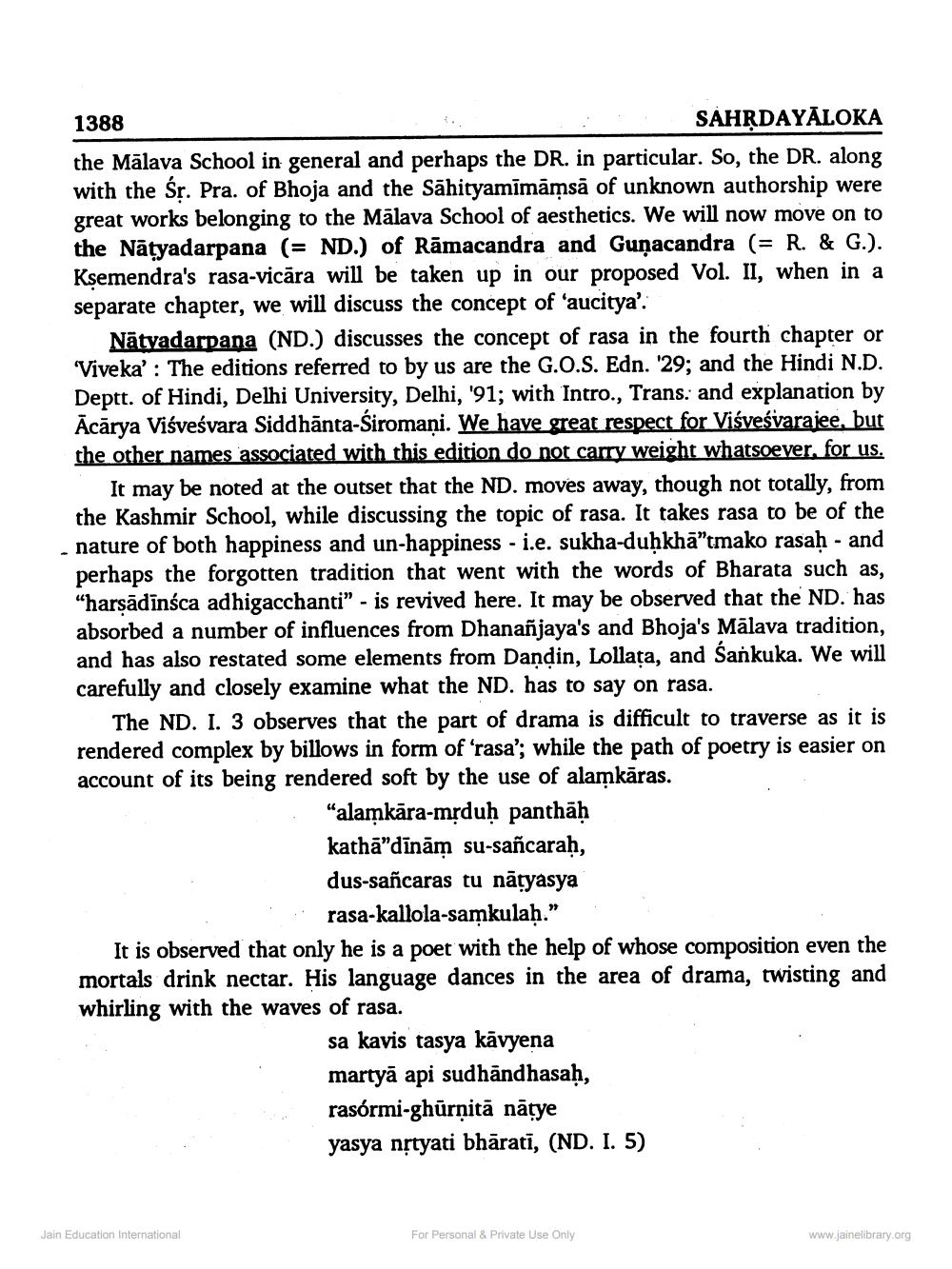________________
1388
SAHRDAYĀLOKA the Mālava School in general and perhaps the DR. in particular. So, the DR. along with the Sr. Pra. of Bhoja and the Sāhityamīmāmsā of unknown authorship were great works belonging to the Mālava School of aesthetics. We will now move on to the Nātyadarpana (= ND.) of Rāmacandra and Gunacandra (= R. & G.). Ksemendra's rasa-vicāra will be taken up in our proposed Vol. II, when in a separate chapter, we will discuss the concept of 'aucitya'.
Nātyadarpana (ND.) discusses the concept of rasa in the fourth chapter or 'Viveka': The editions referred to by us are the G.O.S. Edn. '29; and the Hindi N.D. Deptt. of Hindi, Delhi University, Delhi, '91; with Intro., Trans. and explanation by Ācārya Visveśvara Siddhānta-Siromani. We have great respect for Viśveśvarajee, but the other names associated with this edition do not carry weight whatsoever for us.
It may be noted at the outset that the ND. moves away, though not totally, from the Kashmir School, while discussing the topic of rasa. It takes rasa to be of the nature of both happiness and un-happiness - i.e. sukha-duhkhā"tmako rasah - and perhaps the forgotten tradition that went with the words of Bharata such as, "harsādīnsca adhigacchanti" - is revived here. It may be observed that the ND. has absorbed a number of influences from Dhananjaya's and Bhoja's Mālava tradition, and has also restated some elements from Dandin, Lollata, and Sankuka. We will carefully and closely examine what the ND. has to say on rasa.
The ND. I. 3 observes that the part of drama is difficult to traverse as it is rendered complex by billows in form of 'rasa'; while the path of poetry is easier on account of its being rendered soft by the use of alamkāras.
“alamkāra-mrduh panthāḥ kathā"dīnām su-sañcaraḥ, dus-sañcaras tu nāțyasya
rasa-kallola-samkulah.” It is observed that only he is a poet with the help of whose composition even the mortals drink nectar. His language dances in the area of drama, twisting and whirling with the waves of rasa.
sa kavis tasya kāvyena martyā api sudhāndhasaḥ, rasórmi-ghūrņitā nātye yasya nộtyati bhāratī, (ND. I. 5)
Jain Education International
For Personal & Private Use Only
www.jainelibrary.org




